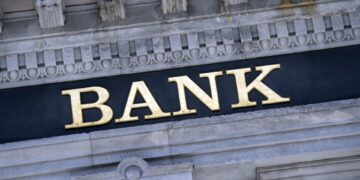The world’s central banks are actively working on implementing digital currencies as use of physical cash wanes, according to banking experts.
A recent survey by the Bank of International Settlements (BIS) showed 86 percent of the 65 central banks surveyed said that were at least in the early stages of developing a digital currency, with 15 percent moving toward pilot programs, according to CNBC.
The goal of the banks is to create central bank digital currencies (CBDC) that are conceptually akin to physical cash, said Piero Cipollone, deputy governor of the Bank of Italy.
“In an environment where cash is used less and less by both the customer and the merchant because the whole ecosystem is shifting towards (being) digitalized … you want to replace the functionality of cash with something that is digital but is as conceptually as close as possible to cash,” Cipollone told CNBC.
Benoit Coeure, head of the BIS Innovation Hub, told CNBC that coordination among the central banks was essential to implementation.
“CBDCs are a national project, a journey with legal dimensions, and will ultimately be a national decision. But we have an international monetary system, and we don’t want CBDCs to hamper the adjustment in the system via free exchange rates or capital flows,” said Coeure.
Central banks became increasingly concerned about the impact of stablecoins on the banking ecosystem when Facebook’s Libra project, now known as Diem, emerged, according to CNBC.
“At that point central bankers started to realize they were under some threat. So the question became, if we can’t beat them then join them. It was very clearly after Libra was promulgated,” Exante Data strategist Grant Wilson told CNBC.
CNBC noted that China is the furthest along in developing a digital currency. The country has been conducting test runs of a digital yuan since year.
“Perhaps this is a way for people to think of the yuan in a different way and chip away at hegemony of the dollar,” Wilson said of the Chinese CBDC.
Earlier this week, the Mainichi reported that Japanese Foreign Minister Taro Aso is interested in discussing CBDCs at the virtual Group of Seven (G7) meeting set to begin on Friday (Feb. 12). The news outlet added that G7 members are concerned China’s digital yuan initiative could threaten the positions of traditional cash currencies.
In January, U.S. Federal Reserve Chair Jerome Powell said he wasn’t in a rush to adopt a CBCD because of the risks such currencies could pose to the status of the U.S. dollar, CoinDesk reported. A U.S. digital currency, he said, was likely years rather than months away.
“We don’t feel an urge or need to be first,” Powell said of CBDCs, according to the report. “Effectively, we already have a first-mover advantage because [the U.S. dollar is] the reserve currency.”
According to CNBC, central banks are exploring both wholesale digital currency, which would be used by financial institutions, and retail digital currency, which would be used by the masses.
One major concern is that CBDCs might cause runs on banks if users decide to park their money in central bank-issued currency.
One way to avoid that scenario, Cipollone told CNBC, would be to make the digital currencies interest bearing above a certain level. He added that this could also allow the central bank to pass negative interest rates directly on to consumers rather than having them pass through commercial banks.
——————————
NEW PYMNTS DATA: BUY NOW, PAY LATER CONSUMER STUDY

About: Buy Now, Pay Later: Millennials And The Shifting Dynamics Of Online Credit, a PYMNTS and PayPal collaboration, examines the demand for new flexible credit options as well as how consumers, especially those in the millennial demographic, are paying online. The study is based on two surveys, totaling nearly 15,000 U.S. consumers.








